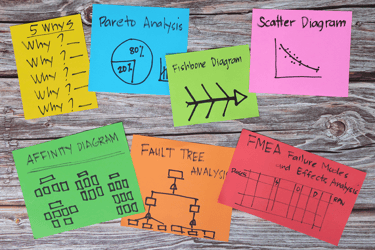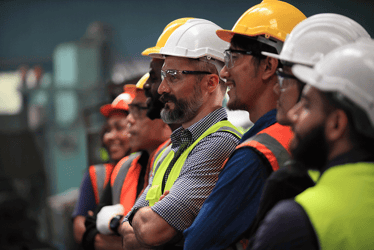The Packaging Industry's Sustainability Challenge: Why ERP Systems Are Essential for Success A straightforward guide to navigating sustainability regulations across folding carton, flexible...
Sustainable corrugated packaging: can recycled paper lead the way?
Can corrugated packaging become more sustainable while maintaining high performance?
As global consumers demand greener solutions, the corrugated packaging industry finds itself at a crossroads. With the rise of online shopping and direct-to-consumer deliveries, the pressure to innovate is more intense than ever. But how can manufacturers strike the right balance between sustainability and strength?
The answer lies in how the industry leverages recycled paper, a material that offers tremendous environmental benefits but also presents challenges. In this article, we'll explore the pivotal role recycled paper plays in creating sustainable corrugated packaging solutions - and the innovative strategies that could take packaging to the next level. If you’re invested in the future of packaging, keep reading to discover how recycled paper is shaping the industry's path to sustainability.
Contents
- The role of recycled paper in sustainable packaging
- Consumer trends driving the demand for sustainable corrugated packaging
- Challenges in fiber integrity
- Regulatory pressures
- Paving the way for a more sustainable future
The role of recycled paper in sustainable packaging
The pulp and paper industry stands as a beacon of sustainability, championing the concept of a circular economy through its extensive recycling initiatives. Dating back to the 1960s, the industry's efforts in recycling graphic paper have been monumental, with Europe leading the charge in recycling at 70.5% (2023), with the average global recycling rate at 59.9%.
In packaging, recycled paper is a cornerstone raw material, offering environmental benefits and the potential for further technical advancement. Consumers increasingly prioritize sustainability in their purchasing decisions, so the demand for eco-friendly packaging continues to surge. The proliferation of online shopping has further propelled this trend, shifting the focus from bulk B2B shipments to individualized packaging for direct-to-consumer delivery. Consequently, the packaging industry is under pressure to innovate, producing stronger, lighter, and more sustainable materials – the performance packaging model.
Consumer trends driving the demand for sustainable corrugated packaging
The shift toward sustainability isn't just a corporate initiative - it's increasingly being driven by consumer demand. Today's consumers are more conscious of the environmental impact of their purchases, and many actively seek brands that prioritize eco-friendly packaging. In fact, studies show that more than 60% of consumers are willing to pay a premium for sustainable products and packaging.
The surge in e-commerce and direct-to-consumer deliveries has accelerated this trend, with consumers expecting not only convenience but also environmentally responsible packaging solutions. As a result, brands are adopting sustainable corrugated packaging to align with these preferences, using recycled materials to lower their carbon footprint. This shift is forcing manufacturers to innovate with lighter, stronger, and greener materials that meet both consumer expectations and performance standards. For corrugated packaging manufacturers, this trend represents both a challenge and an opportunity. By embracing sustainable practices, companies can appeal to the growing base of eco-conscious consumers while enhancing their brand reputation and driving customer loyalty.
Challenges in fiber integrity
Despite the high rates of paper recovery, the production of high-quality paperboard needs to be improved. With changing consumption habits leading to declining graphic paper production, fewer virgin fibers are being introduced into the recycling stream. This absence of virgin fibers has gradually deteriorated the quality of recycled fibers, compromising the strength and integrity of finished paper products, especially those destined for packaging.
Industry experts have identified a key term in addressing this issue: Fiber Integrity. This concept underscores the importance of evaluating the quality of recycled fibers, which tend to exhibit shorter lengths and increased impurities due to the recycling process. Fiber Integrity is crucial as these compromised fibers contribute to diminished paper strength, posing a formidable hurdle in meeting the stringent requirements of high-quality packaging materials.
Innovative approaches are being explored to mitigate this challenge. For instance, one strategy involves segmenting pulp into different fractions, enabling targeted treatments to enhance fiber strength and quality. Another approach could be the use of advanced technologies to remove unwanted impurities from the recycled fibers. By isolating low-bonding fiber fractions, activating inactive fines, and removing unwanted ash fractions, recycled paper's overall strength and integrity can be significantly improved.
Regulatory pressures
Regulatory pressures are also playing a significant role in driving sustainability in packaging. Governments around the world are introducing stricter environmental regulations, pushing industries to reduce waste and increase the use of recycled materials. Initiatives like the European Union's Circular Economy Action Plan and plastic bans in various countries have made it clear that manufacturers must embrace sustainable practices or face penalties.
In the corrugated packaging industry, this means adapting to regulations that emphasize the use of recycled content, reduction of waste, and improved recyclability of packaging materials. For example, Extended Producer Responsibility (EPR) programs are being implemented in many regions, requiring manufacturers to take responsibility for the entire lifecycle of their packaging, from production to post-consumer disposal.
These regulations not only create challenges but also provide an opportunity for manufacturers to get ahead of the curve by adopting sustainable corrugated packaging solutions. By complying with regulatory demands and integrating recycled fibers into their packaging, companies can avoid penalties while benefiting from the positive environmental impact and improved brand image.
Paving the way for a more sustainable future
While using recycled paper in corrugated packaging presents undeniable environmental advantages, ensuring its sustainability requires concerted efforts to address the inherent challenges of fiber quality and integrity. The industry is making significant strides in this direction through ongoing research and innovation, such as the development of new recycling technologies and the use of advanced materials science to improve the quality of recycled fibers. With these efforts, the packaging industry can harness the full potential of recycled paper, paving the way for a more sustainable future in corrugated packaging solutions.
Wondering how to seamlessly integrate recycled papers into your corrugated manufacturing process?
Talk to us about how adopting recycled papers into your roll stock needn’t be a daunting challenge in your corrugated board manufacturing process. With advanced closed-loop process control and QCS technology, we help corrugated manufacturers transition to more sustainable and lower-cost production utilizing recycled papers while producing the high-quality, high-performing board that brands, retailers, and consumers demand.




